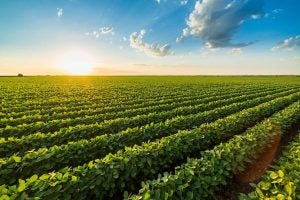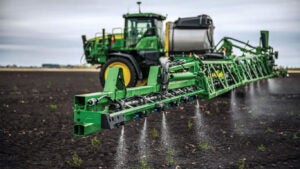Farmers in roughly 10 percent of counties in North Dakota, the largest spring wheat-producing state in 2023 and ninth-biggest soybean grower, are struggling with resistant Kochia weeds on their fields. These weeds, if not treated, can reduce up to 70 percent of crop yields. However, Kochia, as well as other weed species, often no longer respond to the most common crop-control solutions, leaving farmers with significant losses. But farmers in North Dakota are not alone.
Resistance to traditional treatments used to control weeds, insects, and crop diseases is becoming a major issue for farmers worldwide. According to the UN, between 20 percent and 40 percent of crops globally are lost to pests each year. Without the right toolbox to assist farmers in this battle, the losses could easily double, posing an increased threat to global food security and the planet.
But technology — and especially AI-based approaches — may likely generate solutions to this issue.

It is crucial that the industry continues to increase the positive attributes of high potency, low-cost chemical products while improving sustainability both from a resistance and safety standpoint. Industry is currently tapping into the power of AI in various ways to tackle the problem of treatment resistance, such as developing novel synthetic chemicals. Development of novel crop protection products, using AI, combined with a deep understanding of biology and chemistry, has the potential to create the building blocks for safer chemicals, reducing toxicology and environmental health risks early in the process. This provides a more sustainable product, while ensuring that crop yields increase with the expanding needs of the population.
One way to use AI systems is to increase the potency of chemicals, thus creating a more effective product, reducing the volume of active ingredients dispensed into the fields — a win-win for both farmers and the environment. A machine learning-based AI system can test billions of potential molecules to find the one that can inhibit the target protein in any pest (insect, weed, or disease).
While using AI for massive virtual screening of chemical libraries is exciting, the fact that AI can be utilized to help identify entirely new modes of action is even more exciting. New modes of action are crucial in order to overcome target-based resistance that to a great extent has developed due to misuse of compounds over time.
Chemicals made this way can be designed with safety and sustainability in mind. By having more modes of action available, farmers can slow the process of resistance by utilizing chemical mixtures and different field application programs. Finally, AI-based discovery methods may save both time and money, compared to the standard 12-year development time and the average costs of about $300 million per new pesticide. However, the true value is that these new products will operate on novel modes of action and targets, ultimately solving the real problems threatening farmers and our food supply.

With this approach, farmers can minimize their crop losses; consumers will have food-safety, even in a world with increasing population; and the planet gets fewer inputs into the ecosystem.
I believe that the transformative potential of AI in sustainable product development for agriculture is clear and promising. AI is not just a technological innovation — it represents a paradigm shift towards more efficient, eco-friendly, and socially responsible agriculture. Continued investment and innovation in AI-driven solutions is essential and there is no better time than now to embrace this transformative potential.
This article was submitted by Merav Beiman, vice president of research and development at AgPlenus, a subsidiary of Evogene, a computational biology company.


